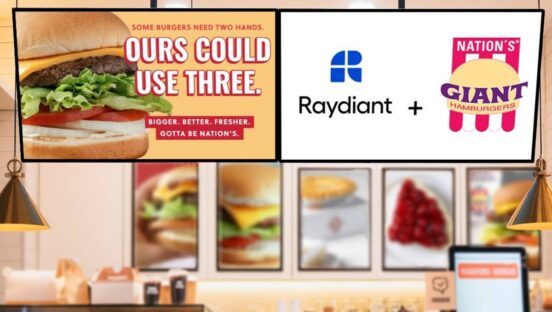The digital transformation is in full swing for companies of all shapes and sizes, and nowhere is that quite as apparent as it is in the restaurant business. According to Deloitte’s recent report, “The Restaurant of the Future,” 40 percent of customers prefer to order online, and when they do they spend more (plus 26 percent at quick service and plus 13 percent at casual and fast casual). It’s clear that adding digital services like online ordering is a core strategy for long-term success.
There are a lot of things to consider as you “digitalize,” making it all too easy to lose sight of the big picture—your brand experience: how consumers are engaging with and experiencing your brand across digital platforms. Brand experience is extremely important and it has to match every other branding element of your company. What this means is transforming as restaurants move beyond in-store to online and in-app.
As restaurants move further into the digital world, preserving your brand experience includes maintaining consistent user interface (UI) and user experience (UX). This is very hard to do, and do well. It’s even harder if you are integrating third-party software or services into your customer experience.
User Interface
UI is the visual representation of your brand through a digital platform. In website parlance, it’s the “skin” of your website or app comprised of all the design elements, visuals, graphics, images, and text. The UI is where you find your graphic design elements of your brand, all of those visual cues that let your customer know it really is you. Think of those iconic brands that are instantly recognized by their branding. It’s consistency that makes that happen.
All of your customer touchpoints should have a similar visual “look and feel” to reinforce your brand’s unique identity and positioning. If your customer’s digital journey includes more than one platform, it should be visually seamless. For example, when a customer comes to your website or mobile app and clicks the “order now” button, their brand experience shouldn’t change.
Imagine walking up to a McDonald’s with its golden arches, ready to order your Big Mac, then step inside only to find yourself in a completely unfamiliar space, not a single golden arch to be found anywhere. It sounds like a little ridiculous in a real-world setting, but it’s noticeable—and not in a good way. Inconsistent branding can be jarring at best and completely confusing for your customers at worst. If your technology partners primarily use ‘one-size-fits-all’ templates, that disrupted branding could be the experience your customers are having.
User Experience
While the importance of UI and its design and branding elements may be more immediately apparent, UX is just as important in maintaining your brand experience. UX is how your customers engage and interact with your digital platforms. It’s the actions they take to navigate through the content of your digital experience. For example, in digital ordering, it’s their journey through the process of ordering—clicking through the menu items, choosing options, customizing the product, paying, and submitting the order.
Ideally, the digital ordering experience will be no different from the experience customers have in-store. That means the same menu items, options, and ordering process. You have trained your customers how to quickly and easily order what they want from you when they come into your store. If your digital order flow is different or products can’t be customized like customer’s are used to, it creates a negative brand experience. Imagine if you tried to order your favorite grande, non-fat, light whip, toffee nut latte via the Starbucks app only to find that “light whip” wasn’t an option because programming didn’t allow for it. You’d be rightfully irritated. There’s no longer any excuse for online transactions not having the same amount of customization and personalization as in-person transactions do.
Customer experience research from McKinsey backs this up: a recent survey found that focusing on satisfaction within the customer journey has the potential to boost customer satisfaction by 20 percent and increase revenue by up to 15 percent.
Preserving Your Brand Experience
Every touchpoint between you and your customers serves to either strengthen or weaken customer perception of your brand. Your brand is unique and you spend a lot of time and money to differentiate yourself from your competitors. You also spend a lot of time and money working with technology partners to provide customers with new services, shouldn’t they be seamless.
With the rapid pace of digital change these days, and the roles of digital and customer experience becoming more intertwined than ever, everyone is trying hard just to keep up. But going digital at the cost of your brand’s identity and experience won’t be the kind of transformation you’re looking for—or one that will serve your company well in the long-run.












